

Discover more from My Gaia
Horned Larks
A Horned Lark was about to fly somewhere, but the day just too lovely not to walk...
In winter fields, or along the roadsides, have you seen the little birds with horns?
You can pick out a male Horned Lark by its feather tufts, which stick up from their heads. Males usually wear their “horns” upright, like miniature antlers. Females also have tufts, but theirs stay more slicked down.
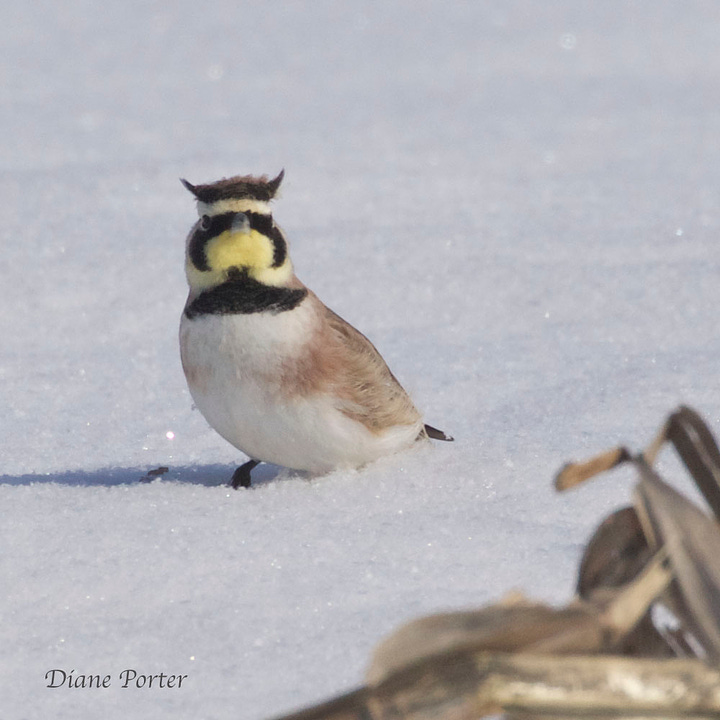
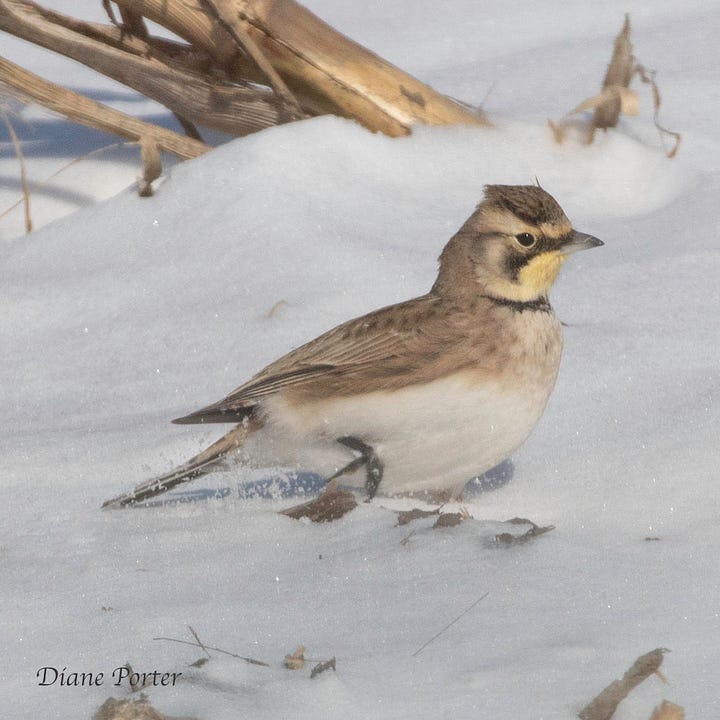
Although they live in most of North America year around, you won’t find Horned Larks in a forest. They’re birds of open country — fields, deserts, and prairies. This is also a bird you can see at an airport, foraging on the grassy areas. If you’re watching for birds as your airplane takes off and lands, you’ll often see Horned Larks out your window.
Where I live, in rural Iowa, they’re extra easy to spot in winter. They’re the sparrow-sized birds flocking on snowy agricultural fields.
What can they eat in the snow?
Except when snow completely covers all the vegetation, Horned Larks manage to find spilled grain, weeds seeds, and maybe even a few bugs riding out the winter in dead stalks. The birds do especially well around livestock operations, where they find lots to eat.
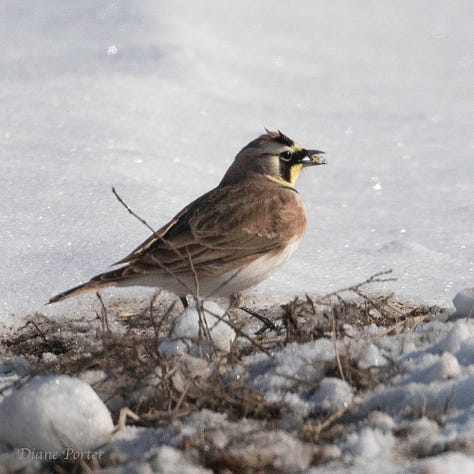
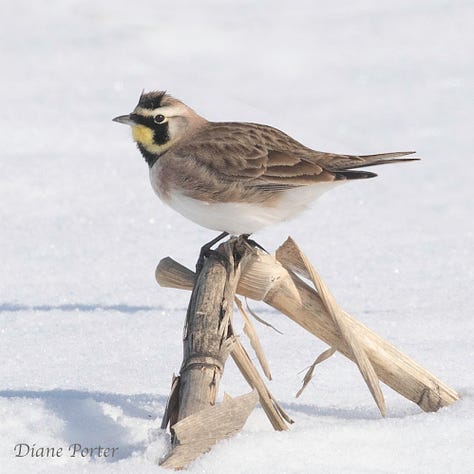
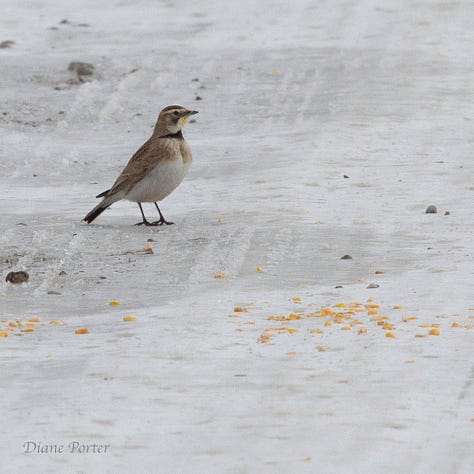
And when snow is deep…
Even after deep snow falls, we find flocks along roadsides, especially adjacent to crop fields. The birds may be finding food that has been spread by road graders. I’ve also stopped on recently plowed gravel roads to watch Horned Larks running around right in front of my car.
Where do they live?
Almost anywhere in North America except Southern Florida, you can find Horned Larks. They breed in Canada and Alaska, but a lot of them breed mid continent, too, where they are around all year.
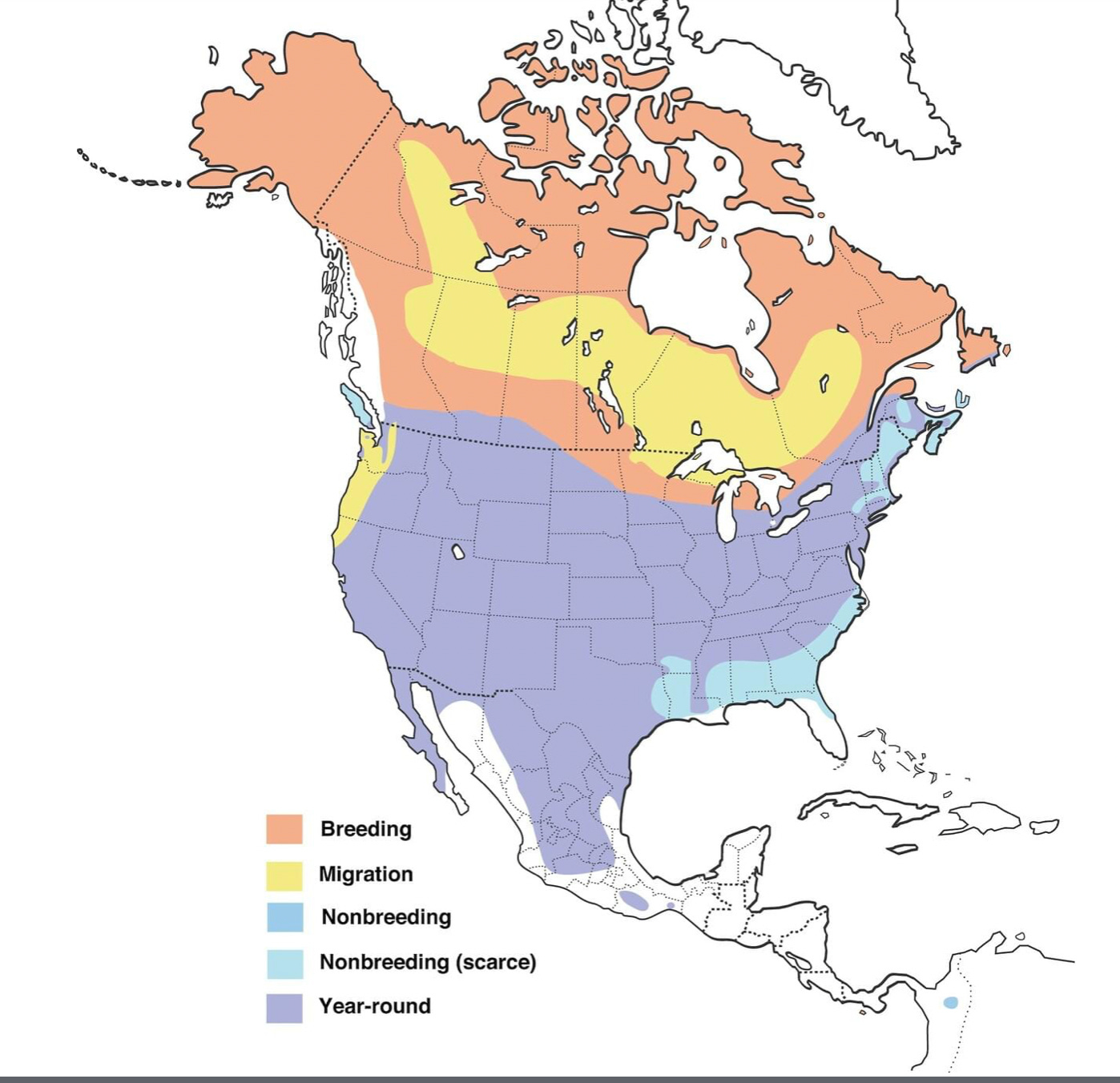
The above map is not half of it. Horned Larks live in Europe and Asia, too. This bird is not fading away, despite current environmental challenges.
Have you watched Horned Larks? I welcome your comments, which you can enter below.
Subscribe to My Gaia
It's about personal contact with nature, especially birds, native plants, and other wildlife in rural Iowa and farther afield. Whenever I can, I try to give nature a helping hand.




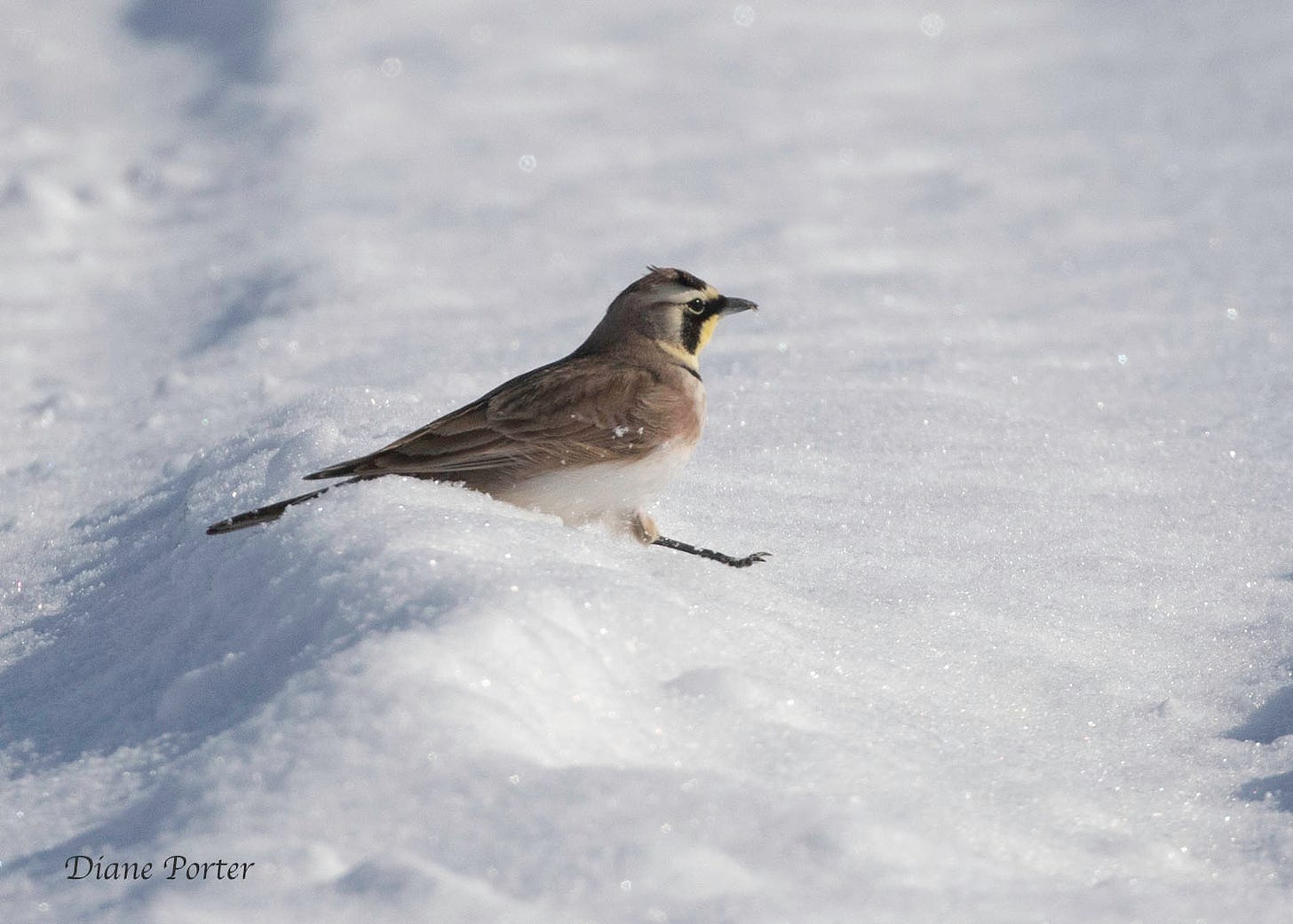
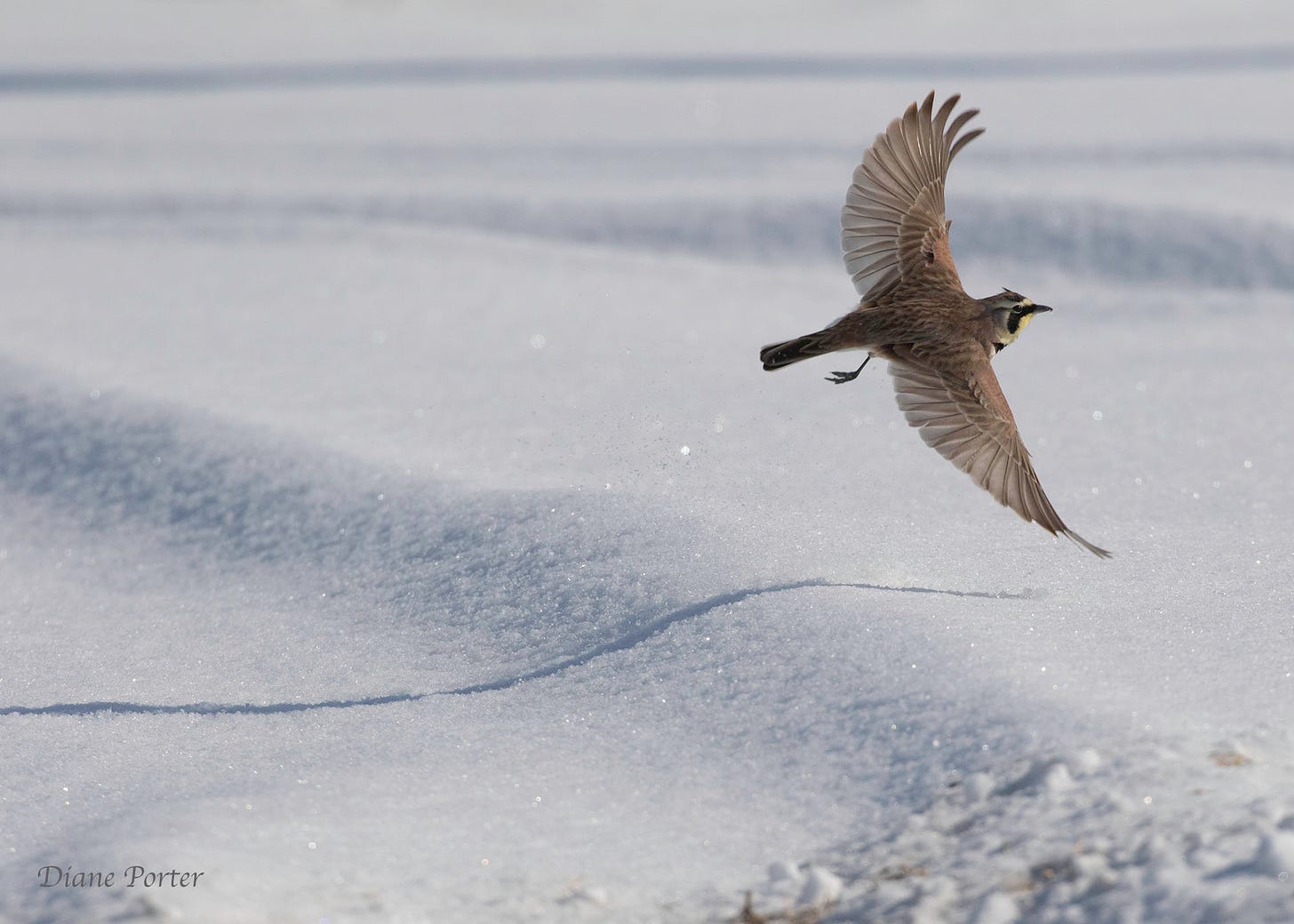
Fabulous. Where do you get these photos?
I have lived in the country in Iowa for 26 years and have never seen them! Beautiful bird!